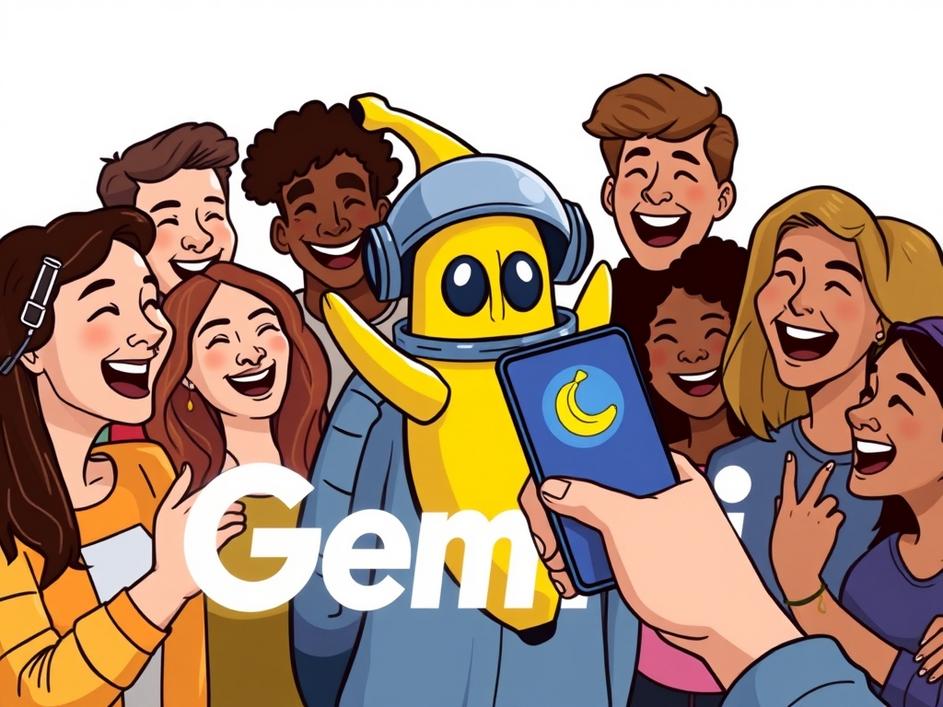


We are a digital agency helping businesses develop immersive, engaging, and user-focused web, app, and software solutions.
2310 Mira Vista Ave
Montrose, CA 91020
2500+ reviews based on client feedback

What's Included?
ToggleGoogle’s Gemini app is doing big numbers, hitting hundreds of millions of users every month. That’s a huge deal in the fast-moving world of AI. Everyone’s trying to figure out what makes an AI app really stick, especially with younger folks. Well, it seems Google might have found a surprising answer, and it involves something called “Nano Banana.” It sounds wild, right? But this little feature, tucked inside the bigger Gemini app, is apparently a huge reason why so many younger users are jumping on board. It makes you wonder: sometimes, the most popular parts of a big tech product aren’t the super complex ones, but the ones that are just plain fun and a bit silly. Let’s dig into how a simple idea might be shaping the future of how we all use AI, starting with the next generation.
So, what exactly is “Nano Banana”? While the details are still a bit under wraps, the name itself hints at something creative and lighthearted. Think about it: an “image tool” with “banana” in the name. It probably lets users do something fun with pictures, like adding banana elements, turning objects into bananas, or maybe even generating playful, banana-themed art from simple prompts. It’s likely a tool that takes something ordinary and makes it instantly silly or unexpected. This kind of feature really clicks with how younger people interact online. They love quick, visual gags, things that can be easily shared and turned into memes. This isn’t just about utility; it’s about pure, unadulterated fun that gets people talking and sharing.
Younger users, especially Gen Z and even younger, are digital natives. They’ve grown up with smartphones in their hands, creating and consuming content at lightning speed. Their online world thrives on visual humor, quick edits, and personal expression. A tool like “Nano Banana,” which probably offers instant, shareable visual fun, fits perfectly into this ecosystem. They don’t want to spend ages learning complex software; they want to open an app, tap a few buttons, and create something cool or funny right away. This ease of use, combined with the novelty and potential for virality, is a powerful mix. It turns an AI app from a serious utility into a playful creative canvas. They’re not just using AI; they’re playing with it, experimenting, and making it their own. This demographic also influences trends heavily, so if they adopt something, chances are it’s going to spread far and wide.
This “Nano Banana” story offers a really important lesson for everyone building AI tools. For a long time, the focus has been on making AI smarter, more powerful, and able to do incredibly complex things. And those things are important, of course. But what this success with Gemini shows is that mass adoption, especially with the younger crowd, often comes down to something much simpler: joy and accessibility. It’s not always the grand, all-encompassing AI models that get people hooked first. Sometimes, it’s a small, quirky feature that lets you do something specific and delightful. This shifts the conversation from “what can AI do?” to “what fun can AI create?” It proves that integrating AI into our daily lives doesn’t have to be just about productivity hacks or deep analysis. It can also be about making us laugh, helping us express ourselves in new ways, and simply adding a bit of unexpected charm to our digital interactions.
So, what does this mean for the next generation of AI apps and the folks building them? It’s a clear signal to think outside the traditional boxes of utility. Developers should consider baking in features that are overtly fun, easy to grasp, and encourage creativity, even if they seem a little bit frivolous on the surface. Don’t underestimate the power of a memorable name and a straightforward, engaging concept. The “killer app” for AI might not be the one that writes a perfect essay or codes an entire website, but the one that turns your friend into a banana, or lets you create a quirky animation with just a few taps. It’s about building an emotional connection, making AI feel less like a cold, calculating machine and more like a creative partner or even a playful friend. The apps that truly win hearts and minds might be the ones that understand the human need for laughter, connection, and simple, shareable moments.
In the end, the success of Google Gemini, partly fueled by its “Nano Banana” feature, is a fascinating case study. It shows us that while AI continues to advance in incredible ways, the path to widespread adoption might just be paved with playful simplicity. It’s a reminder that sometimes, the biggest breakthroughs aren’t about brute force computing or complex algorithms, but about finding those small, clever ways to connect with people, especially the younger generations who are shaping our digital future. So, next time you think about AI, remember the banana. It might just be the most important fruit in the tech world right now, proving that a little bit of unexpected fun can go a very long way in making powerful technology truly lovable and indispensable.



Leave a reply